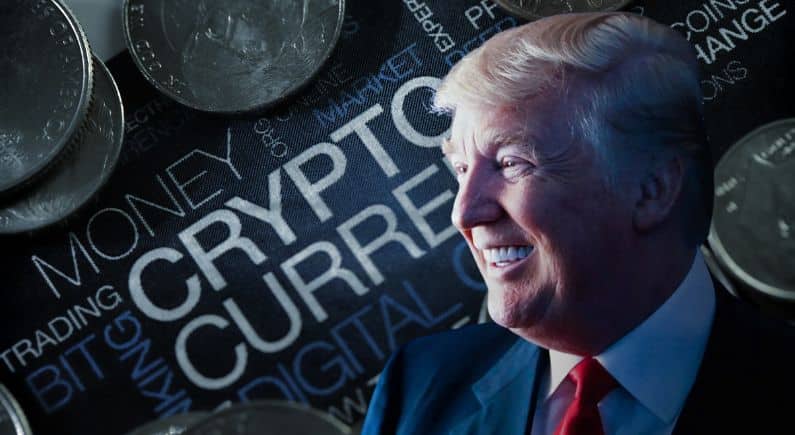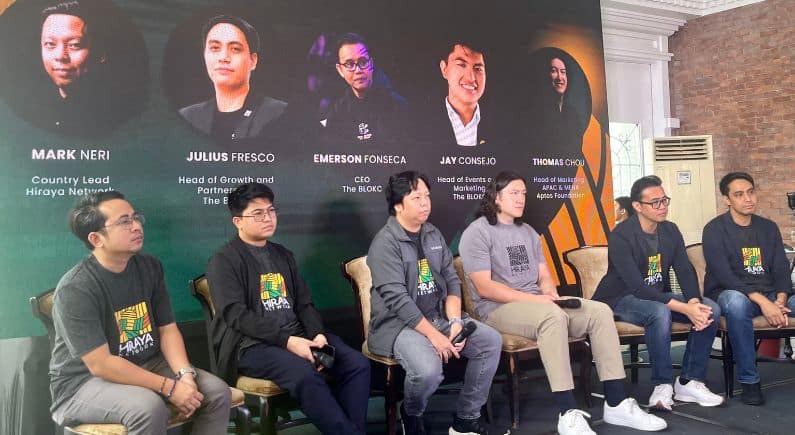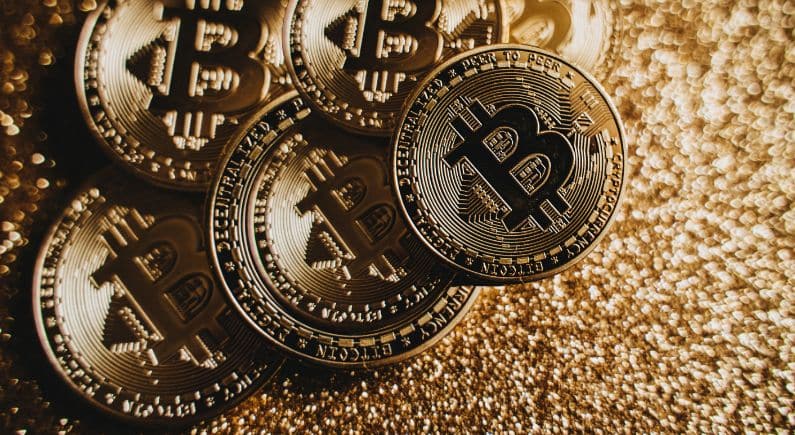Transforming Africa’s mining sector through blockchain

Blockchain is an emerging tech that is set to change several industries for the better, including ancient professions such as mining. JP Fabri from Seed Consultancy analyses the future of the mining industry through blockchain!
The struggle of every economic sector is to remain relevant as times and operating environments change. This is becoming even more challenging as the pace of change continues to change on several levels. Technological, regulatory, market and external changes are all happening at a fast pace leaving policymakers with no room for complacency.
There is also a basic truth about every sector; technology adoption and embracing will be key to its future-proofing, productivity gains, competitiveness, and also regulatory compliance. The mining sector is no exception and the use of blockchain within the sector can be one such driving force of technology.
The extractive industry sector is undergoing significant transformations in response to tightening financial regulations and divestment in mining activities. These changes are compounded by increasingly ethically aware consumers seeking an assurance that the products they buy do not contribute to the negative environmental and human impacts of mining, as well as by the disruptive effects of synthetic gemstone production in the market. These transformations will significantly impact resource-rich mining economies in sub- Saharan Africa.

The use of blockchain technology in mineral supply chains has been presented as a panacea for some of these problems, including social and environmental issues. At its inception in 2008, blockchain first gained renown as the technology underlying the Bitcoin cryptocurrency. As a decentralised network, based originally on an electronic, peer-to-peer payment system, blockchains serve as a public digital ledger to record transactions without relying on financial institutions or third-party control.
Among its core principles, the original decentralised blockchain rests on openness, transparency, and security. Specifically, the possibility of an immutable, or tamper-resistant, ledger has generated different applications for managing high-value assets, including minerals.
Unlike public blockchains (fully decentralised nodes not placed under any single authority), consortium or private blockchains (controlled by a select group of approved or permissioned actors, usually private institutions) have been more conspicuous in the mineral sector. Particularly since 2018, these privately distributed ledgers have emerged in proof-of-concept or pilot stages to showcase how mining, manufacturing and jewellery actors may harness the potential of blockchain technology in the mineral sector.
However, the industry is currently grappling with two related challenges: first, the technical difficulty of translating conventional methods of tracking the physical commodity – from tagging to fingerprinting – into blockchain-based solutions; and second, creating incentives for proper data entry and validation, as well as compensating for value and information fragmentation across participants in the supply chain.
This article reviews the main applications of blockchain technology in the mining industry, from mineral traceability to due diligence, as well as the main challenges emanating from its implementation in Africa.
While blockchain technology holds the potential to trace and track minerals from point of extraction to the end consumer, the technology alone does not guarantee socially and environmentally responsible practices along the supply chain. Importantly, some of the most expansive traceability initiatives collecting data down to the level of the mining site neglect to record information about ethical labour practices.
Any application of blockchain technology that is focused solely on traceability, we suggest, might allow human rights abuses, corrupt practices, environmental damages and health and safety issues to go unchecked. The policy insight concludes by examining the issue of data agency and ownership, as well as the critical problem of exclusion of artisanal miners or other downstream supply chain actors.
Blockchain for traceability
Since the early 2000s there has been no shortage of instruments and governance initiatives to trace the provenance of gemstones, and diamonds, to control irregular supplies. The push for global transparency and accountability in the mining sector was largely heralded by the Kimberley Process Certification Scheme (KPCS).3 The advent of
new international standards for mineral supply chains were further consolidated by the Dodd-Frank Wall Street Reform and Consumer Protection Act (Section 1502, 2010),
the Organisation for Economic Co-operation and Development’s (OECD) Due Diligence Guidance for Responsible Mineral Supply Chains (third edition, 2016), and the EU’s forthcoming Conflict Minerals Regulation (2021) meant to regulate the trade of tin, tantalum, tungsten and gold.
These initiatives rest primarily on an assessment of provenance or determination of origin, whereby consumers and traders alike take credence in expert reports assessing the country of origin, or otherwise a paper and audit trail capable of fully accounting for a commodity as it moves from production to consumption (chain of custody).
Since 2016 the mining industry has been at the forefront of an alternative to paper certification modelled on the digital-based blockchain ledger. From diamonds to cobalt to gold, there has been an explosion in blockchain-based initiatives for traceability purposes in mineral supply chains.
These are often presented as the silver bullet to the perennial problem of record-keeping in commodity transactions. Blockchain technology seeks to expand the scope of existing traceability initiatives, including determination of origin and enhanced chain of custody.
The digital transparency of blockchain projects offers the potential of a tamper-proof, immutable record of transactions, ownership, and origin. Unlike existing chain of custody initiatives, it effectively surrenders the need for intermediaries or trusted partners to verify, audit or certify the supply chain.
Blockchain and supply chain due diligence
Blockchain technology by itself only guarantees traceability, as previously laid out, but that can also include the traceability of irresponsibly produced or traded minerals. The term ‘blockchain’ can give a false sense of the integrity and responsibility of the associated production and trading practices. Additional due diligence, meaning assessment of risks and their subsequent mitigation or remediation, must complement any implementation of blockchain technology. In practice this would require that any mine site whose production information will be fed into the blockchain comply with selected responsible mining criteria or an existing standard such as a recognised certification or the OECD.
Due Diligence Guidance. It would further mean that other supply chain actors on the blockchain, such as dealers and exporters, also operate within the confines of the law and are not involved in any illicit or corrupt practices. A combination of due diligence and blockchain technology would ensure that no actors along the blockchain are linked to armed groups or contribute to conflict financing, human rights abuses, corruption, or environmental damage.
Blockchain-enabled initiatives should ensure full transparency on data collected, including information pertaining to mining sites, companies responsible for cutting and polishing diamonds, price, provenance, and ownership history. Self-sovereign data, in which only direct parties can access relevant information, would also help provide solutions that allow for interoperability between private blockchains for open communication across the digital ecosystem and to remedy informational asymmetries among participants in the supply chain.
Blockchain and artisanal mining
Blockchain technology represents the potential for end-to-end traceability and for ensuring social and environmental responsibility. However, it also contains risks. Three of those interrelated risks will be outlined in this last section.
The first question pertains to what blockchain technology actually does for the miners on the ground, typically the most vulnerable actors in the supply chain.
While the technology carries the promise of traceability and assurance for downstream companies and consumers that they have not contributed to conflict or human rights abuses, it is not always clear how blockchain technology benefits local communities, or how it contributes to poverty reduction and development or more inclusion.
While the benefits of blockchain adoption are more apparent to downstream industry actors, they are less so for upstream participants. One of the benefits for artisanal and small-scale miners mentioned by Everledger is price transparency for miners. Importantly, one benefit derived from coupling blockchain with due diligence for miners would be a better price or working and trading conditions as part of a specific blockchain initiative.
Another issue is the risk of exclusion and further marginalisation of certain groups from the technology.
While some blockchain pilots explicitly target artisanal and small-scale mining (ASM), others still lack an answer to how the technology will be made accessible to these miners, and whether it will be available, applicable, relevant, and affordable for them.
Exclusion is an issue not only for blockchain participation but also in terms of data agency. An important question when it comes to blockchain in the context of the mineral sector is how to ensure collaboration and participation while avoiding digital exclusion and private data ownership.
In other words, how to facilitate the inclusion of artisanal and small-scale miners as active participants in the blockchain while avoiding the risk of digitally excluding those who cannot take part in these digital developments.
Finally, as the data is rarely fed back to ASM miners, the minerals industry should clarify the terms of data ownership in blockchain initiatives and expand the potential benefits that artisanal and small-scale miners can derive from it in comparison to other supply chain management tools.
If these factors are not taken into consideration, blockchain technology might still achieve its goals of traceability and due diligence, but it would not necessarily be beneficial – or, at worst, be outright negative – for those who ultimately need to be at the centre of any mineral supply chain initiative: the miners and receiving communities in the countries of production.
Conclusion
Blockchain systems can be technically demanding and energy consuming to set up and maintain. Industry actors should reflect on the benefits of blockchain technology when compared to other traceability initiatives and chain-of-custody systems.
For example, decentralised distributed ledgers may offer important advantages for scaling up local initiatives without the burden of consensus algorithms or data structured in blocks, and with the added value of safe data storage across different locations.
To deliver on the promise of responsibly produced and traded minerals, blockchain technology must be combined with due diligence practices (the OECD’s Due Diligence Guidance, or another recognised responsible mining standard). Authorised parties should carry out risk assessments, mitigation, and remediation actions along all nodes of the supply chain, as well as verifying the quality of data collected and stored on blockchains.
Blockchain-enabled initiatives should ensure full transparency on data collected, including information pertaining to mining sites, companies responsible for cutting and polishing diamonds, price, provenance, and ownership history.
Self-sovereign data, in which only direct parties can access relevant information, would also help provide solutions that allow for interoperability between private blockchains for open communication across the digital ecosystem and to remedy informational asymmetries among participants in the supply chain.
Alongside quantifiable data most directly useful for supply chain management and mineral traceability, blockchain and DLT promoters should design protocols that are accessible to and inclusive of upstream actors, artisanal and small-scale mining communities.
It is therefore imperative that any technological strategy for the sector is part of a wider transformation map. Sectors need a holistic approach to their transformation and not fragmented or siloed initiatives.
Technology is not an automatic solution but needs to be integrated within a set of policies, processes and procedures that are aligned with an overarching vision which feeds into skill acquisition, market development and firm investments. Future-proofing a sector through transformation maps needs to be holistic in nature, approach, and output.
JP Fabri is a co-founding Seed Consultancy, a research-driven advisory firm based out of Europe that focuses on sectoral transformation, ecosystem development and policy initiatives.
www.seedconsultancy.com | [email protected]
Next up: Malta Week
Don’t miss out on amazing networking opportunities and exclusive industry insights at Malta Week. Four leading shows will bring the best of the business back-to-back to a first-class meeting point. Malta Week will consist of SiGMA, AIBC, Med-Tech World and AGS, each presenting the top developments of their focal industries.
The cross-collaboration of each brand make Malta Week the number one destination for leading think-tanks of the gaming sector, emerging tech, digital health and digital marketing. The middle of the Mediterranean is the perfect place for multi-faceted business deals and face-to-face conversations with leading affiliates, policymakers and thought leaders.






